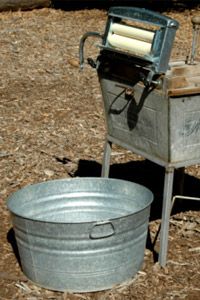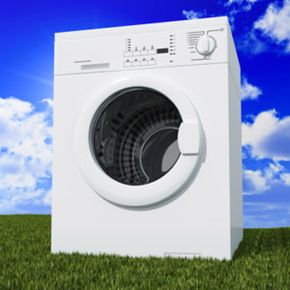The advent of low-water, low-suds washers has brought lean, mean, energy-saving machines to laundry rooms everywhere. The price tag is considerable (high-efficiency machines can range from $500 to $1,600), but manufacturers tout the long-term energy and water savings. And we all know that the front-loaders are the darlings of design. So you get a good-looking washer and bragging rights about your lack of environmental impact. But what about that top-loading monster in your mom's garage? You know, the one that fills a basket with about 40 gallons of water. Is there any way that thing can be energy efficient?
Advertisement


